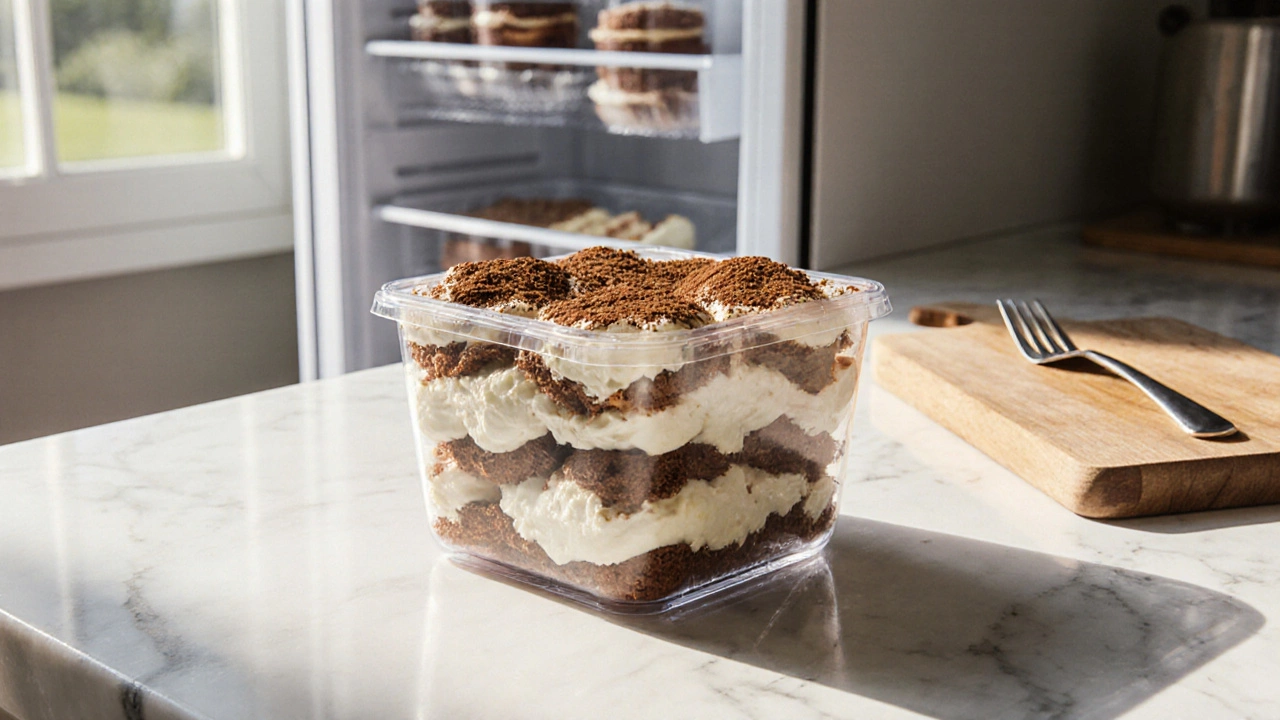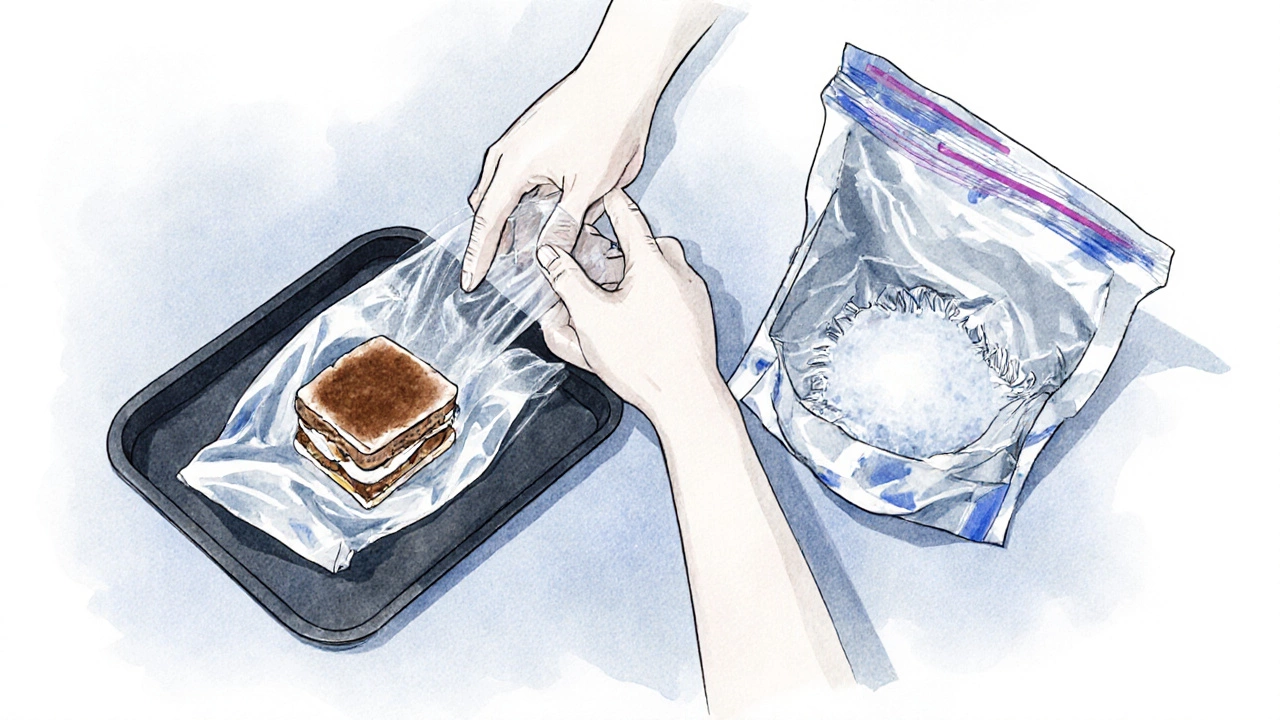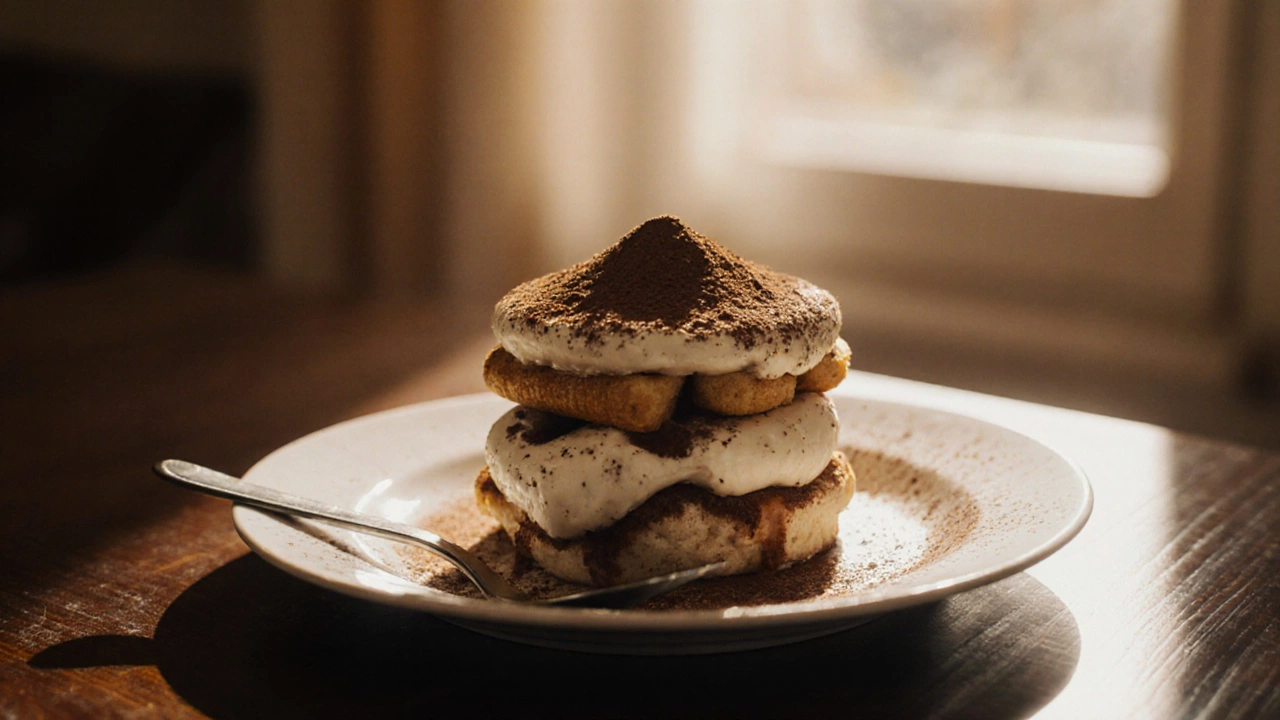
Dessert Freezing Calculator
Calculate optimal freezing duration and thawing guidelines for various desserts based on type and ingredients. This tool helps you maximize freshness while minimizing texture degradation.
Freezing Results
Key Considerations
Avoid These Mistakes
Ever wondered if that leftover tiramisu in the fridge can survive a night in the freezer? The short answer is yes - but you need to know the right steps, the right timing, and the right expectations. In this guide we’ll break down everything you need to know about freezing ready‑made desserts, with a focus on freeze tiramisu without turning it into a soggy surprise.
Why Freeze a Ready‑Made Dessert?
Freezing a dessert isn’t just about extending its shelf life. It’s also a handy way to batch‑cook for holidays, reduce waste, and keep a sweet stash on hand for unexpected guests. When done properly, the texture and flavor stay remarkably close to fresh. When done wrong, you end up with freezer burn, ice crystals, and a loss of that delightful creaminess.
What Types of Desserts Freeze Well?
Not every dessert is a freezer‑friendly candidate. Here’s a quick mental checklist:
- Custards and puddings - work well if you protect them from air.
- Mousse - light, airy, and surprisingly resilient to freezing.
- Cheesecakes - dense structure means they survive the cold without cracking.
- Tiramisu - the focus of this article.
- Fruit‑based desserts with high water content (e.g., fresh fruit tarts) tend to turn mushy.
- Frostings made with high butter content can become grainy.
When in doubt, test a small portion first.
Understanding the Science: Ice Crystals, Freezer Burn, and Food Safety
Freezer burn occurs when moisture sublimates from the surface of the dessert, leaving dry, gray‑ish patches. It doesn’t make food unsafe, but it ruins texture. Ice crystals form when water in the dessert freezes slowly; rapid freezing creates smaller crystals, preserving smoothness.
Food safety is another concern. According to the USDA, most prepared desserts can be stored safely at 0°F (‑18°C) for up to three months, provided they’re wrapped airtight. After that, the risk of off‑flavors and texture degradation rises sharply.
Step‑by‑Step: How to Freeze Tiramisu Properly
- Prepare the dessert for freezing. If you made the tiramisu yourself, let it set in the refrigerator for at least 4 hours. For store‑bought versions, keep the original container if it’s airtight.
- Wrap tightly. First, cover the surface with a layer of plastic wrap, pressing it directly onto the custard to eliminate air pockets. Then add a second layer of aluminum foil or place the portion in a zip‑lock freezer bag, removing as much air as possible.
- Label with date. Write "Tiramisu - freeze until [date]" on the foil. This helps you stay within the three‑month window.
- Freeze quickly. Set your freezer to the coldest setting for the first 2-3 hours. Rapid freezing creates smaller ice crystals, which means a smoother texture when you thaw.
- Store flat. Lay the wrapped dessert on a flat tray until it’s solid, then move it to a shelf. This prevents the layers from shifting and the ladyfingers from breaking.

Key Ingredients and How They React to Freezing
Understanding the role of each component helps you avoid surprises.
- Mascarpone cheese - the creamy heart of tiramisu. It holds up well but can separate if thawed too quickly.
- Ladyfingers - sponge‑like biscuits that absorb coffee and liqueur. Freezing locks in moisture, so they stay soft after thawing.
- Coffee and liqueur - alcohol lowers the freezing point, preventing the liquid from turning into large ice crystals, which is why tiramisu freezes more gently than plain cream.
Thawing and Serving: Getting That Fresh Feel Back
Thawing is where many people go wrong. The goal is to bring the dessert back to a near‑room‑temperature state without shocking the structure.
- Move the wrapped tiramisu from the freezer to the refrigerator at least 8 hours before you plan to serve. This slow thaw preserves the custard’s silkiness.
- Once fully thawed, remove the plastic wrap and give the top a quick dusting of cocoa powder or shaved chocolate for a fresh look.
- If you notice slight separation in the mascarpone layer, gently fold it back with a spatula - a little extra love restores the original texture.
Comparison Table: Popular Desserts and Their Freezer Compatibility
| Dessert | Freezer‑Friendly? | Typical Texture Change |
|---|---|---|
| Tiramisu | Yes | Ladyfingers stay soft; mascarpone may separate slightly |
| Fruit Tart | No | Crust becomes soggy, fruit releases water |
| Chocolate Mousse | Yes | Maintains airy texture if wrapped well |
| Cream Cheese Frosting | Partial | Can become grainy; best stored in fridge |
| Panna Cotta | Yes | Keeps silky; may develop a thin frost layer |

Common Pitfalls and How to Avoid Them
- Leaving air inside the wrap. Use a vacuum sealer if possible, or press out as much air as you can with zip‑lock bags.
- Thawing at room temperature. This creates condensation that can make the dessert watery.
- Freezing for too long. Even with perfect packaging, quality starts to drop after 3 months.
- Over‑mixing after thaw. Gentle folding retains the dessert’s lightness.
Quick Checklist: Freeze‑Ready Dessert Essentials
- Wrap tightly with plastic wrap, then foil or freezer bag.
- Label with date and type of dessert.
- Freeze rapidly (set freezer to coldest for first few hours).
- Store flat to keep layers even.
- Thaw in refrigerator for 8‑12 hours before serving.
Frequently Asked Questions
Can I freeze a tiramisu that has fresh fruit on top?
Fresh fruit adds extra moisture, which can turn mushy after thawing. If you want to freeze, add the fruit just before serving rather than before freezing.
How long can I keep a frozen tiramisu before quality drops?
Aim for a maximum of three months. After that, you may notice a duller flavor and a slight change in texture.
Do I need to defrost a frozen tiramisu before adding cocoa powder?
Yes. Defrost in the fridge first, then dust with cocoa. Adding powder to a frozen surface can cause clumping.
Is it safe to refreeze a dessert that’s been thawed?
Generally avoid refreezing because each cycle creates larger ice crystals and increases the risk of bacterial growth. If you must, keep the dessert below 40 °F (4 °C) and refreeze within 24 hours.
Can I use a regular zip‑lock bag for freezing tiramisu?
Yes, but squeeze out as much air as you can. For best results, double‑wrap with plastic and foil, or invest in a vacuum sealer.